This is a Kiev-15, a 35mm SLR camera produced at the Soviet Union’s Arsenal plant in Kyiv, Ukraine between the years 1973 and 1980. The Kiev-15 TTL was a slightly updated model with a different exposure meter that was produced only in 1980, the camera’s last year of production. The Kiev-15 was an update to the earlier Kiev-10 from 1964 to 1975. Both Kiev models were attempts to release an all new Soviet designed SLR system camera with a modern shutter and automatic exposure. The Kiev-15 was largely the same as the Kiev-10 except with a through the lens CdS exposure meter, instead of a front plate mounted selenium meter, plus some cosmetic changes. The most distinct feature of both cameras was the completely unique fan-shaped shutter that looked like no other shutter made in any camera.
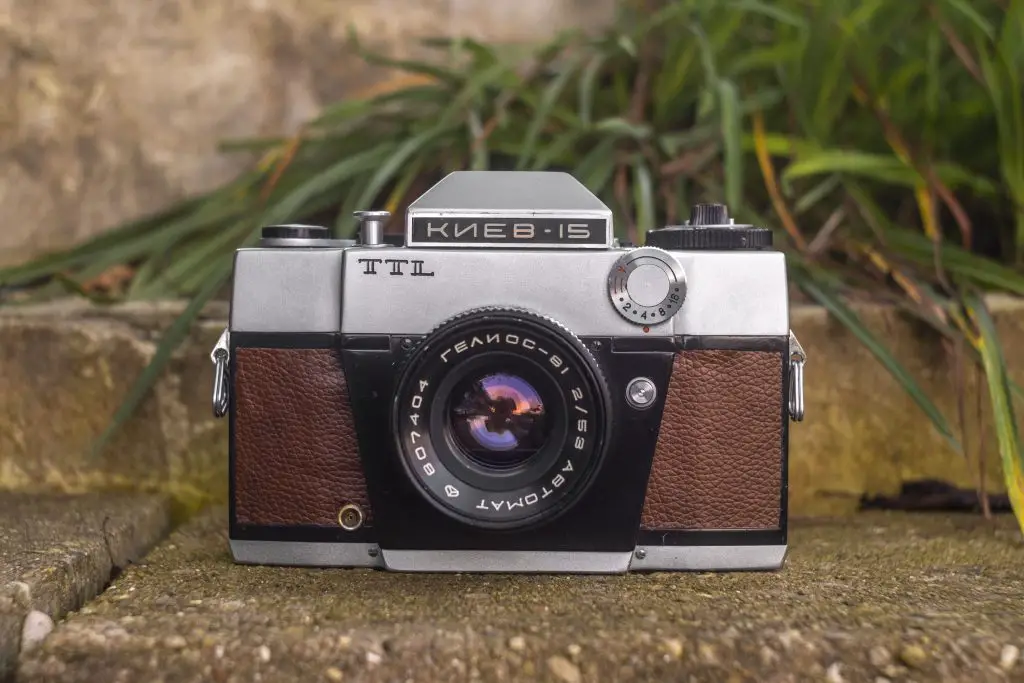 Film Type: 135 (35mm)
Film Type: 135 (35mm)
Lens: 53mm f/2 Helios-81 Automat coated 6-elements
Lens Mount: Kiev Bayonet
Focus: 0.36 meters to Infinity
Viewfinder: Fixed SLR Pentaprism
Shutter: Kiev Fan Focal Plane
Speeds: B, 1/2 – 1/1000 seconds
Exposure Meter: Coupled TTL CdS Meter w/ Shutter Priority AE (Original TEE Model had two CdS sensors)
Battery: 1.35v РЦ-53 / PX625 Mercury Battery
Flash Mount: Hot shoe, 1/60 X-sync
Weight: 1091 grams (w/ lens), 903 grams (body only)
Manual (in Russian): http://fotoussr.ru/cameras/kiev-15-tee/
How these ratings work |
The Kiev-15 TTL has it’s roots as one of the most advanced and innovative 35mm SLRs produced in the Soviet Union. With shutter priority auto exposure, a unique bayonet lens mount, and one of the strangest shutters I’ve ever seen, Kiev SLRs are unlike no other. I love the look of this camera and it produced decent results, but it’s control layout and completely illogical metering system took away some of the fun while shooting it. Reliability problems often plague these cameras, so finding one that works at all can be a challenge. This is a worthwhile camera to add to your collection, if only for how strange it is, but it’s probably better off on a shelf than loaded with film in your bag. | ||||||
| Images | Handling | Features | Viewfinder | Feel & Beauty | History | Age | |
| 2 | 0 | 1 | 1 | 1 | 1 | 0% | |
| Bonus | +1 for uniqueness, there truly is no other camera ever made like this | ||||||
| Final Score | 7.0 | ||||||
History
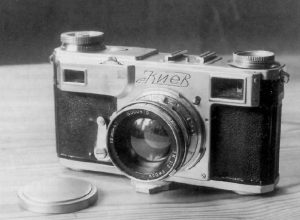
In the years after World War II, the Arsenal factory in Kyiv, Ukraine is where the machinery and supplies for the Zeiss-Ikon Contax camera confiscated by the Red Army were moved. Production of what would become the Kiev II and III began in 1947 and would continue for at least four decades.
In the years that would follow, the Arsenal factory churned out thousands of Kiev cameras with only minor updates to the original prewar Contax II and IIIs that they were based off. Unlike Zorki and FED cameras who were reverse engineered copies of the Leica II and III but had quite a number of differences between them and the original, the Kievs were built on the same machinery, using existing parts that were originally built in Germany, making them a true continuation of the original German model.
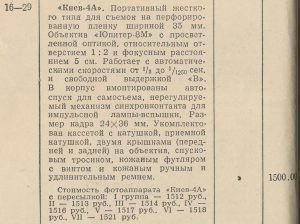
Kiev cameras were some of the most expensive made in the Soviet Union. In 1960, a Kiev 4A carried a price of 1500 roubles, which was equal to roughly 2 months salary of the average Soviet worker.
Perhaps as a result of their reputation as makers of the finest cameras in the Soviet Union, the Arsenal factory was not asked to produce other 35mm cameras and to focus solely on the Kiev. By the early 1960s however, the preference for Single Lens Reflex cameras became to take hold over rangefinders like the Kiev 4 and 4A. Most German and Japanese optics companies had already released their own SLR models years earlier, and even within the Soviet Union, KMZ had already released the Zorki rangefinder based Zenit SLR in 1952 and their top of the line Start SLR in 1958.
As a result, in the early 1960s, probably 1961 or 62 based on how long it takes to create an all new camera from the ground up, work began on an all new 35mm SLR camera, one that would share nothing in common with any other camera produced anywhere in the world. In my research for this article, I found very little information about the development of what would become the Kiev-10. I don’t know who built it, where, it whether it not it used any inspiration from other designs being worked on at the time.
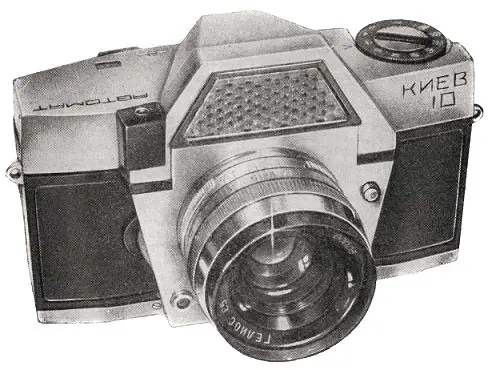
The only evidence of an early Kiev SLR is the prototype drawing to the right which according to sovietcams.com was said to have been announced in the Soviet press. Looking at the prototype compared to an actual Kiev-10, the only difference I can see is a lack of the horizontal lines beneath the meter and the lens having a chrome barrel, instead of a black painted one like on the finished ones.
The Kiev-10 would make it’s debut in 1964, featuring it’s own unique bayonet lens mount, a large selenium exposure meter prominently located on the front side of the prism, and the first implementation of automatic exposure on a Soviet made camera.
The Kiev’s most distinct feature cannot be seen by looking at the outside of the camera, for that you’ll need to open the film compartment and take a look at the unique fan shaped shutter.
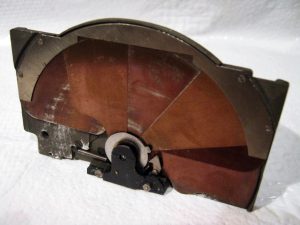
A focal plane design with a top 1/1000 speed, the Kiev 10’s shutter uses a series of copper lamellas that move radially around a central pivot centrally located at the bottom of the shutter. This clever arrangement causes the “curtains” to travel diagonally across the film plane, allowing for even exposure from 1/2 to 1/1000 seconds. It’s metal construction meant that pinhole leaks were not possible, and theoretically more accurate.
The reality is, this completely bizarre shutter is unique to the Kiev-10 and 15 only and was not attempted by any other company, Soviet or otherwise. I don’t have a strong knowledge of how shutters are built and the Kiev-15 I’m reviewing for this article is the only one I’ve ever come across, so I cannot speak to it’s reliability. All I can say is that mine works, and it sure is cool!
The shutter aside, the signature feature of the Kiev-10 was that it was the first SLR camera with auto exposure built in the Soviet Union. It’s plausible that the designers took a few cues from the Zeiss-Ikon Contarex which implemented an auto exposure system that used a centrally located selenium exposure meter and a body controlled aperture system. Both the Contarex and the Kiev-10 had a dial on the right side of the lens mount that was coupled to the meter and opened and controlled the iris on the lens. Both cameras also had a unique bayonet lens mount with an internal throat of about 44mm.
The lens mount for the Kiev-10 was entirely new and required new lenses to be developed for it. In total, only 5 lenses were ever made for the Kiev’s lens mount.

- Mir-20 20mm f/3.5 Automat
- Mir-1 37mm f/2.8 Automat
- Helios-81 50mm f/2 Automat
- Jupiter-9 85mm f/2 Automat
- Jupiter-11 135mm f/4 Automat
There was also a Kiev to M39 adapter available that allowed you to use M39 lenses for the Zenit SLR on the camera, although without any control over the iris, and therefore no auto exposure.
In 1973, the Kiev-15 TEE would be released with several upgrades, the most significant of which was a switch from the large body mounted selenium exposure meter to a through the lens dual CdS battery powered meter. The location of the aperture control wheel was relocated to the top plate in front of the shutter speed dial, and both the door release and shutter release buttons were redesigned.
In 1980, the last year of production, the Kiev-15 TTL was released with a change to the exposure meter, replacing the dual CdS meters with single CdS meter that was better able to handle low light than the previous system and allowed for simpler exposure controls.
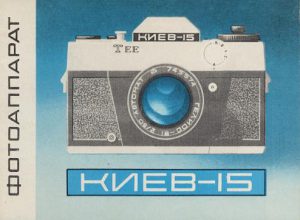
In my research for this article, I was unable to find any information regarding how expensive any of the Kiev SLRs were when they were first sold. Even if I had, coming up with a conversion to US dollars and accounting for inflation for the currency of an economy that no longer exists is extremely difficult to do.
With that in mind, I’ll make an attempt at guesstimating a likely value based on similar cameras available at the time, and using average working salaries of people living in the Soviet Union at the time. For that, I found a 1960 Soviet camera price guide that listed the only other high end 35mm Soviet made SLR, the KMZ Start at 1700 roubles. The Kiev-10 wouldn’t go on sale until 4 years later, but it’s plausible that Arsenal would have targeted this price as a benchmark for what their new camera should cost.
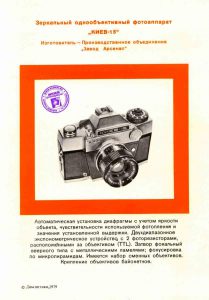
According to Vlad at ussrphoto.com, the average monthly working salary in the Soviet Union in 1964 when the Kiev-10 first went on sale was 86 roubles per month. In 1961, the Soviet Union had a currency reform which divided roubles by a factor of 10 to come up with “new roubles”. So if we can assume that a Kiev-10 in 1964 cost 170 roubles, it cost the equivalent of 2 months salary to purchase.
In the United States, according to the Average Indexed Monthly Earnings (AIME) scale used by the US Social Security system the median working salary in 1964 was $4,576 a year, or about $381 a month. That means for a US worker to devote 2 months salary to an item, it would have had to cost $763 then, or when adjusted for inflation $6300 today.
Would the Kiev-10 actually cost the equivalent of $6300 in the Soviet Union in 1964? Probably not, but that number is probably less wrong than you might think as the US and USSR economies were very different back then. The US being a capitalist country, had an economy that was much more open than in the USSR and the opportunities for people to make higher wages was greater. A camera like the Kiev-10 would have been a luxury item affordable only by very few.
As is the case of all products, the price of the Kiev-10 and the later Kiev-15 would continue to drop. The Kiev-15 TTL being reviewed here is said to have been exported to western countries, but I’ve found no evidence of this. I searched through all of my regular resources and found no mention of this camera for sale in the United States or other countries. Had it been sold here, it’s price would have likely been heavy discounted as it’s feature set in 1980 would have not been favorable to other cameras at the time, and the perception of a Soviet built camera during the peak of the cold war would have been a tough sell for western photographers.
Despite the improvements to the Kiev-15 TTL, the camera was still severely behind that of other SLRs available at the time and was only produced for one year. Arsenal already had another line of Kiev SLRs starting with the Kiev-17 first introduced in 1975 and later the Kiev-19 from 1985. Although lacking in auto exposure, each of these cameras had more traditional ergonomics, support for the Nikon F-mount and likely were cheaper to produce and sell.
Today, the Kiev-10 and 15 cameras are popular among Soviet collectors due to their historical significance and unique looks and design. When found in working condition, they are capable cameras, but I doubt many people actually use them anymore. These are worthy additions to any collection, even if they only ever sit on a shelf.
Repairs
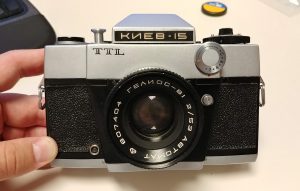
When this Kiev-15 came to me, it seemed to be in good working condition. The camera had looked barely used and had only two physical defects, the first, a small dent in the top of the prism near the edge of the hot shoe, and the second that the body covering on the rear door was missing, and the front covering was badly peeling.
Wanting to improve the appearance of the camera, I decided to remove the front skins and re-cover the camera. I couldn’t find any pre-cut skins for a Kiev-15 so I decided to make my own. Rather than buy sheets of camera leather from places like hugostudio.com or cameraleather.com, I went the discount route and ordered some adhesive backed leather couch patches from Amazon.
I ordered two different kinds, one in black that came in a roll, and the other in a dark brown that came in sheets. Neither were real leather, but more of a synthetic leather-like material. After they arrived, I decided I liked the look of the dark brown one better, plus it had a slightly grippy feel to it like real leather would have, so I got out a pair of sharp scissors and did my best to cut and trim the pieces until they fit reasonably well. I won’t go into too much detail as to how I did this as it was mostly trial and error and with less than $20 invested in enough material to do at least 10 more cameras, I didn’t mind if I messed up too much.
When I was done, I was quite happy with the result. It wasn’t perfect, but it looked way better than it did before, and now I can say I have what I can only assume is the only dark brown couch patch fake leather wrapped Kiev-15 in the world!
My Thoughts
While I hesitate to call myself a Soviet collector or even an expert, I now have enough experience with Soviet cameras that I feel as though most of them can be grouped into one of two categories. Copies, and Ambitious. The Kiev-15 is the latter.
Everything about this camera, from it’s gargantuan styling, fan shutter, and complicated metering system scream ambition. As we have the benefit of hindsight to tell us, ambition does not always equal success.
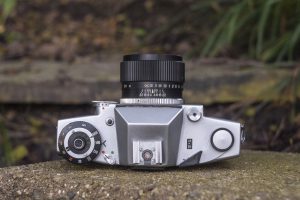
Starting with the right side of the top plate of the camera, things don’t seem to be all that strange. We have a fairly ordinary film advance lever with an automatic resetting exposure counter and large contoured shutter release button next to it. The shutter release is threaded for a cable release, and there’s even a film plane indicator for precise focus situations.
Above the prism is a hot shoe which has an X-sync speed of 1/60 which wouldn’t have been that impressive in 1980 when this camera was produced, but it was quite fast in 1964 when the original Kiev-10 first made it’s debut.
Things start to get strange on the left however. The large dial on the left is the shutter speed dial, with speeds from 1/2 to 1/1000 plus Bulb. On the Kiev-15 TTL, 1/30 is painted orange and everything below it in yellow, but on the Kiev-15 TEE, 1/60 is painted orange. I had thought the orange speed was to indicate flash sync speed, but I later learned the orange speed is needed for using the battery check button, which I’ll explain later.
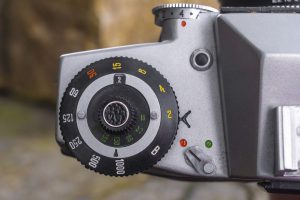
The chrome ring inside of the black shutter speed dial is a dial for setting the maximum aperture of whatever lens you have connected. Despite the Kiev 15 and the earlier Kiev 10 having their own unique bayonet lens mounts, no provision for determining the max aperture was implemented, so you have to set this manually. In the image to the left, it is at 2 since I have the Helios-81 53mm f/2 lens mounted.
Inside of the chrome ring is a black dial with green numbers that are for setting the film speed. The green numbers use the GOST (ГОСТ) film scale which was still widely used in the Soviet Union at this time and was similar to the ASA scale, but off by a factor of 0.9. For example, GOST 22 and 90 are the same as ASA 25 and 100, respectively.
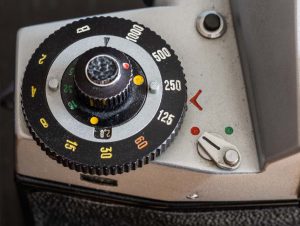
This film speed dial is where the most significant difference exists between the original Kiev-15 TEE and the TTL model. Many sites online suggest the difference is only in the name, but this is untrue.
The original TEE model had two separate CdS exposure meters, one for high sensitivity and one for low. With the TTL model, the CdS was upgraded to a single meter that could handle a wider variety of exposures. On the earlier TEE model, the GOST film speed dial would have two yellow dots, one larger than the other. Understanding exactly how this worked is very confusing because not only do I not have the TEE model, but also there are no English language manuals to explain it, but my best guess is that in bright light, you turn the dial to the larger dot and calibrate your film speed, and in low light, you use the smaller dot. The image to the right shows these two dots on a TEE model owned by Chris Osborne.
Next to the dial is a switch for powering on the meter. Orange means off, and Green means on. I’ve never done a full rundown test on how quickly the meter will deplete the battery, but several sites for this camera suggests it is a power hog, so you’ll want to be extra mindful to turn it off when not in use.
Above this switch is a black button for checking the status of the battery. Pressing this button with the meter switched on or off will cause the needle in the viewfinder to move, but it will not give you an accurate measurement of the power of the battery. The Kiev-15 has an extremely convoluted metering system in which every setting, from the film speed, max aperture setting, shutter speed, and aperture wheel all affect the needle in the viewfinder.
In what I believe to be the most complicated process for checking the state of the battery on any camera ever, this Russian language site spells out the exact steps for checking the battery. First, you must have the meter switched off. Then with the shutter set to the orange shutter speed (1/30 on the TTL, 1/60 on the TEE), the film speed scale set to 32, and the max aperture setting set to 2, pressing the battery check button should move the needle to the black dot between 4 and 8. Doing this process without those exact settings will still cause the needle to move, but you won’t know if the meter has the correct amount of power. If the voltage is too high or low, the meter will take a corresponding high or low reading.
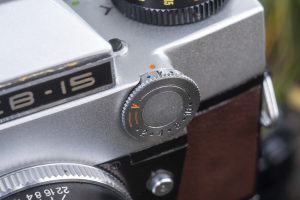
Lens aperture is controlled via a wheel on the front of the camera, in front of the battery check button. This wheel is engraved both on it’s front face, and along the edge so it can be easily read from different angles. Possible choices are f/stops 2 through 16 with dots in between to indicate 1.4, 2.8, 5.6, 11 and 16. There is also the letter A which enables the camera’s shutter priority auto exposure mode.
With the camera in A mode and the meter on and properly calibrated, the needle in the viewfinder will indicate an f/stop that it has determined will result in correct exposure. There are two red markers near the top and bottom of the viewfinder scale. As long as the needle is pointing to either of the red markers or in between the two, the shutter can be fired, resulting in correct exposure. If however the needle indicates outside of either the two red markers, the shutter release will lock indicating that correct exposure cannot be obtained with the current amount of light and selected shutter speed. Either recompose your shot with different light or select a more appropriate shutter speed and then the shutter release will unlock.
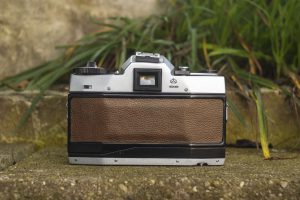
The back of the camera is mostly just a large piece of body covering with a rectangular eyepiece for the viewfinder above it. To the left of the viewfinder is a handy film transport indicator that spins as film is advanced through the camera. Unlike other cameras in which all or parts of the film rewind dial rotate as film is advanced through the camera, this little indicator is the only way to know if film is properly transporting through the Kiev.
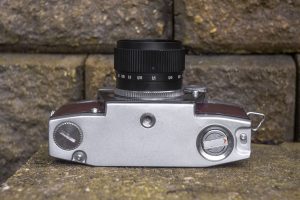
The bottom of the camera has from left to right the cover for the РЦ-53 / PX625 battery compartment, rewind release button, centrally located 1/4″ tripod socket, rewind knob with flip out handle, and film compartment door release.
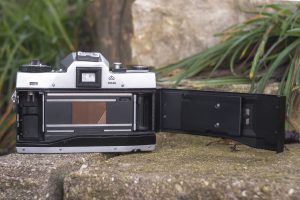
Immediately after opening the film door of the Kiev 15, the first thing most people would notice are the copper shutter blades of the Kiev 15’s very unique fan shaped shutter. To my knowledge, no other camera made by any other company uses a shutter like this, and for good reason as it looks very complicated. In my research for this article, I tried to find more information about who and why it was designed and I came up with nothing. If anyone reading this ever learns more about this shutter, please share it with me.
Check out the video below that I made of me firing the shutter at two different speeds.
Film transport is from left to right onto a fixed and multi-slotted take up spool. The sprocketed shaft that appears in most 35mm cameras is mostly covered by the metal plate that makes up the film gate. This gives the entire film plane a much wider look than you’d expect to see in most cameras. One final very strange detail that isn’t immediately obvious is that even though the 35mm cassette loads on the left, the rewind knob is on the bottom of the camera, and not the top.
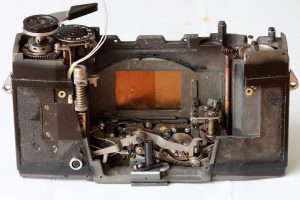
Usually when you have a camera where the rewind knob is on the bottom, this indicates a right to left film transport since the fork that the rewind knob uses to rewind the film is now on the bottom. On the Kiev 15, the fork is on the top which means that inside of the camera there is a complex linkage from the rewind knob on the bottom, through the middle of the camera, then it must make two right angle turns to engage the fork at the top of the film compartment.
In the image to the right, you can see a long rust covered shaft on the right side of the image connecting the rewind knob to gears on the top of the film compartment. This, in addition to the fan shaped shutters is another mystery of this camera.
Each side of the camera has a beefy strap lug which is very important considering the large heft of the camera. Another thing you can see looking at the camera’s sides is how thick this thing is.

When it was first released in 1964, the Kiev-10 debuted an all new bayonet lens mount specifically for that camera. With the lens removed, the large overall size of the body dwarfs the opening for the lens mount, but with a working diameter of 44mm, it’s a fairly ordinary size and would have been capable of supporting the weight of heavy telephoto lenses, had any been developed for it.
Removing the lens requires pressing the circular button near the 2 o’clock position around the lens while rotating the lens clockwise. The amount of rotation required to remove the lens is quite small. I estimate it to be about a 15 – 20 degree twist and the lens comes free of the mount. Reattaching it is simply the opposite of removing it. With the lens attached, the lens mount on this example was quite solid with no play or looseness, suggesting a very snug fit. It is a shame that no other camera used this mount as it seems to have been thoughtfully desgined.
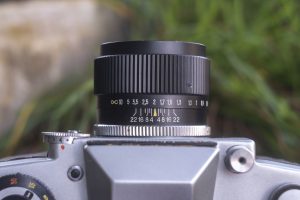
With the aperture controlled by the body, a thick ribbed focus ring dominates most of the length of the Helios-81 Automat lens. The focus ring on this example is smooth and nicely damped without any wobble or grittiness. The focus distances are in meters and have a minimum focus of 0.36 meters (14.2 inches) which doesn’t qualify it as a macro lens, but allows you to get close enough for some interesting pictures.
Although this Automat lens was made specifically for the Kiev-10 and 15, the optical formula of the 53mm f/2 lens is the same of other Helios-81 lenses, including the 81M used on the Nikon F-mount Kiev-19.
The viewfinder in the Kiev is large and reasonably bright for a camera originally built in the 1960s, but would have been seen as behind the times in 1980 when the Kiev-15 TTL came out.
Featuring a microprism focus aide in the center and a noticeable Fresnel pattern radiating out from the center, brightness drops off noticeably near the corners. In bright sunlight, it’s acceptable but as soon as you try to compose images in anything but ideal light, the corners start to disappear.
On the right is an analog exposure scale. This scale uses light that enters through the lens to see it, so like the corners of the main viewfinder, this can be difficult to see in low light situations. Thankfully, the numbers are quite large, somewhat compensating a bit. An analog needle points to a recommended f/stop regardless if the camera is in Auto or Manual mode. Turning the meter off using the switch on the top plate, and the needle moves all the way to the top of the scale where it rests. Of the two red markers only the bottom one moves and is there to indicate the maximum and minimum exposure settings that the camera can use when the meter is on. If the needle is beyond the red zone and the camera is in Auto mode, the shutter release becomes locked. I could not find any combination of settings that made the top red marker move and without any kind of user manual for this camera, I am uncertain if that’s by design, or if there is something wrong with my particular camera.
The Kiev-15 TTL certainly showed an effort on the part of Soviet engineers to create a modern camera for the era in which the original model was built, but in the years leading up to 1980 when this final model was released, the expectations for how a modern camera should work changed, leaving this camera a bit behind the times. Of course, any camera’s shortcomings can be forgiven if it makes great pictures. So did it?
My Results
My first few attempts at shooting the Kiev 15 didn’t go so well as I accidentally left my entire first roll in my pants pocket when it went through the laundry. I had half a thought that perhaps the felt light trap on the cassette might have protected the undeveloped film inside, but it didn’t.
Along the entire roll were these long and splotchy bright green marks. They actually looked cool in a way that people who like to intentionally distress film might actually find appealing. I don’t know if this effect could be intentionally repeated, but might be worthwhile to explore in a “What Happens to Laundered Film” article. This isn’t that article however, so I had to shoot another roll of film to see what kinds of results I could get.
For that, I split a roll of Fuji Industrial 100 that I started out in a Fuji TW-3 after it had died. I don’t know if that film was cursed however as some film transport issues that I initially dismissed on the first roll, returned. I was able to shoot about half of the remaining exposures before I gave up.
Looking past the green splotches of the first gallery and at the images from the second, we can see good results on par with those obtained by any number of other Soviet SLRs. The Helios-81 lens performed similarly to the one I shot on the Kiev-19 last year, which is to say, good, but unremarkable.
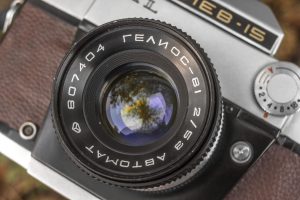
I did not trust the Kiev’s meter even though it did respond to light, but with a combination of age and over complicated operation, I found it was easier to just shoot the camera Sunny 16 and I’m glad I did as the images seemed to come out close enough to properly exposed which suggests the shutter timings are pretty accurate.
There were a few instances where I struggled to see focus, especially in low light situations. The one of the green and red flower was sitting on the edge of a retired train car and was in heavy shade. I tried to shoot this one at minimum focus wide open and missed it by an inch or two. While I’ve seen SLRs with darker viewfinders, the Fresnel screen on this one would have been acceptable in 1964 when the original Kiev-10 came out, but was sorely out of date in 1980 when this particular camera was built. As a person with poor vision, even if this camera had excelled in every other area, it’s not one I would have likely come back to often for this very reason.
In what seems like I’m headed towards a lackluster review, the Kiev-15 redeems itself in quirkiness. The bizarre design and egregious meter have a level of appeal that only an ambitious Soviet camera could have. I don’t know anything about who designed this camera, but I definitely give them credit for trying something new. Of all the things that could go wrong with this camera, the shutter actually worked fine. Based on the limited number of reviews I’ve found online, it seems that finding these cameras with a working shutter is rare, so I am appreciably happy to have one that allowed me to use it as much as I did.
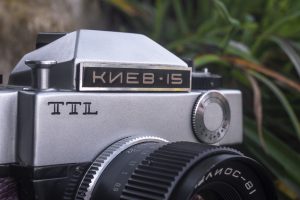
I can’t fault the camera for my forehead slapping forgetfulness where I put the film through the laundry, and whether the meter was accurate or not, I certainly wouldn’t fault a 40 year old meter for any errors in metering. By far the worst problem I had with this camera was in the film transport. As I shot the camera, it stopped wanting to advance the film. I could feel the wind lever shredding the film’s perforations and the film transport indicator would stop moving as I wound the camera.
Twice when this happened, I found the only way to resume advancing the film required me to open the camera back in total darkness (so as not to ruin the film) and manually “push” the film over where the perforations had shred, so that it could advance again and then close the back. Fuji film is not known for being fragile and since this happened multiple times mid roll, it can’t have been due to how I loaded it.
As I near the end of this review, the ultimate question is whether you should buy a Kiev-15 of your own. If you are a fan of Soviet cameras, or those with distinct features like the shutter and control layout, then this is definitely something you’ll want to add to your collection. If you plan on shooting it however, be forewarned that the strange shutter design also means it is prone to failure, and when it does fail, there are very few people left in the world who will work on it. The metering system is unreliable, and I had problems with film transport on both of the rolls I shot in it. The ergonomics leave much to be desired and the viewfinder is dim, so you’ll want to shoot this in good lighting.
The Kiev-15 is neat, but I don’t know that even if it was in perfect working condition that I would come back to it often. In it’s current operation, it likely will spend the rest of it’s days sitting on my shelf where I am guessing 99% of the other Kiev-15s in the world are.
Related Posts You Might Enjoy
External Links
http://cjo.info/classic-cameras/kiev-automat-series/
http://camera-wiki.org/wiki/Kiev_15
http://ussrlens.com/camera/kiev-arsenal/kiev15 (in Russian)
http://www.photohistory.ru/1207248179445542.html (in Russian)
http://fotoussr.ru/cameras/kiev-15-tee/ (in Russian)
http://www.sovietcams.com/index.php?358519844
https://www.serialforeigner.photo/gear/kiev-15/
http://www.collection-appareils.fr/x/html/camera-11111-Kiev_15%20TEE.html
http://ussrphoto.com/forum/topic.asp?TOPIC_ID=119
https://www.flickr.com/photos/schyter/albums/72157656447523319


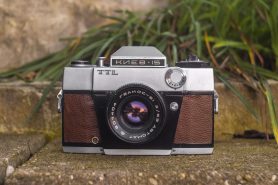
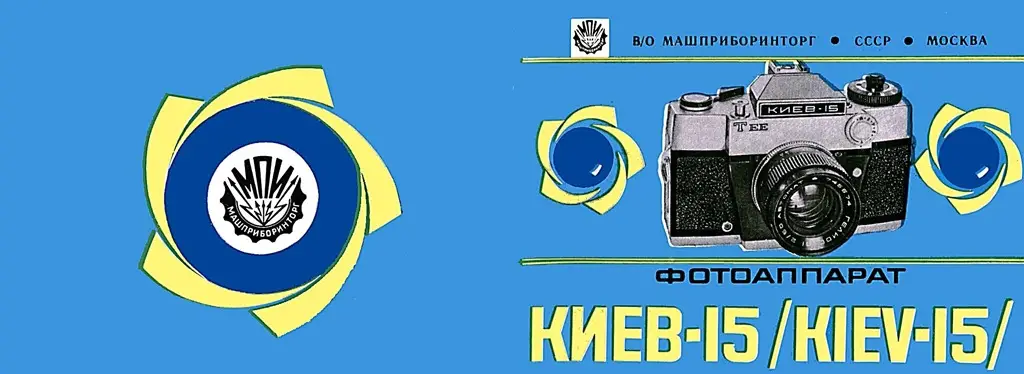
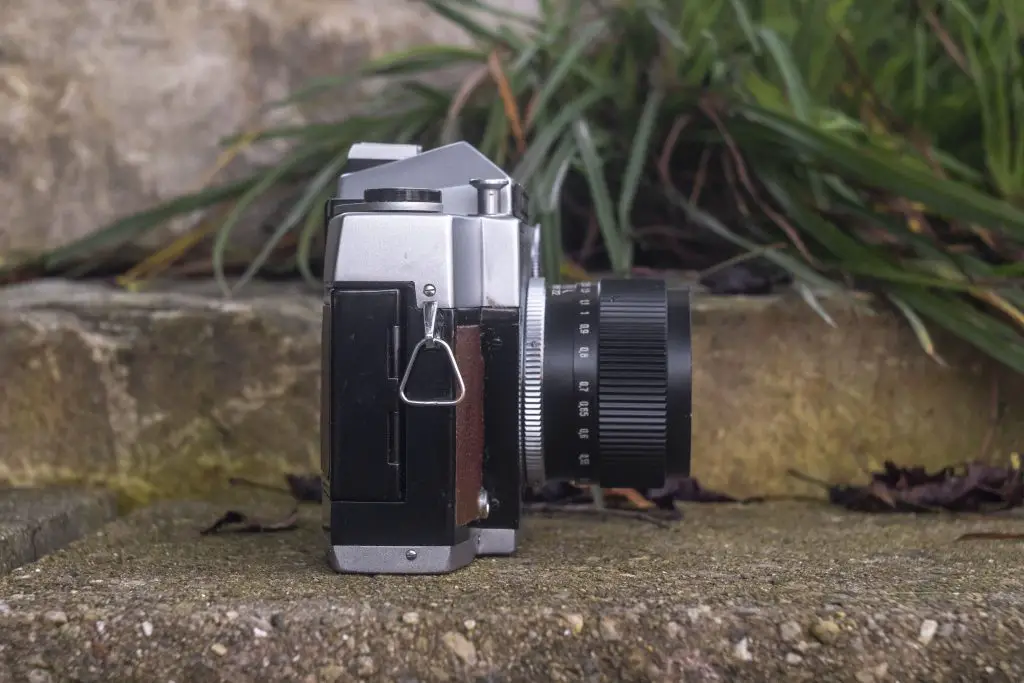
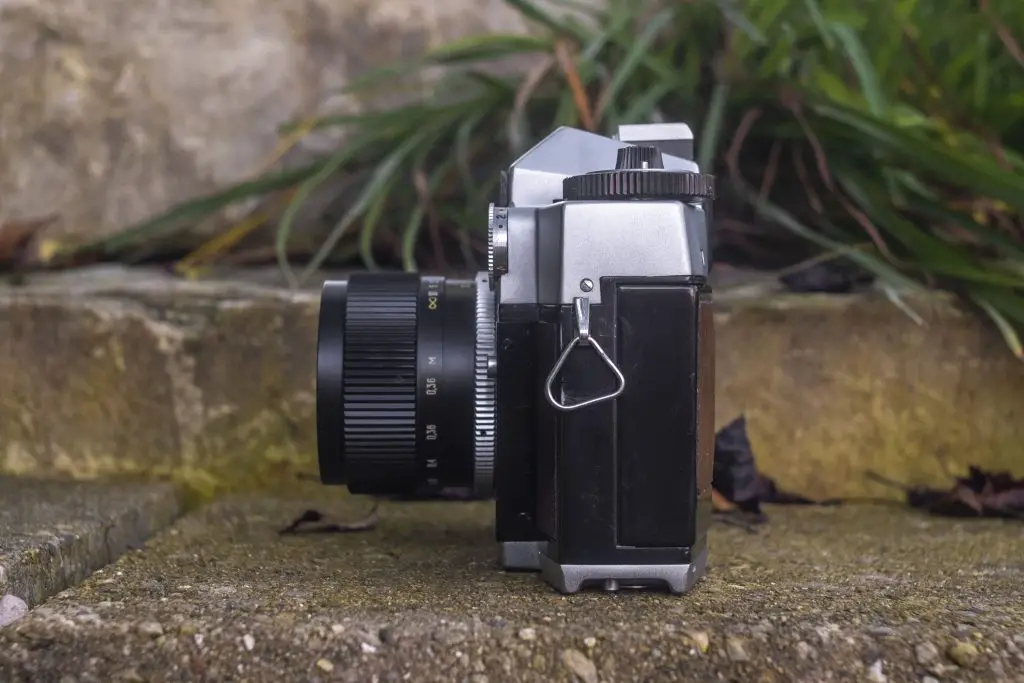
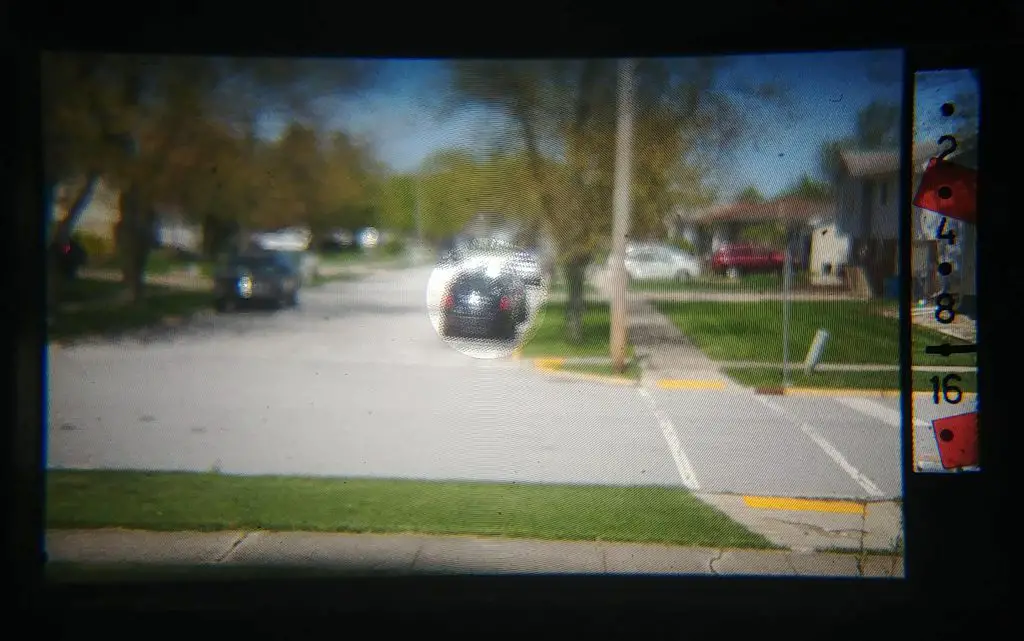










Mike,
Fantastic review. The information is fascinating. I’m a huge fan of the Kiev 10 and 15. I wanted to point out that besides the five Kiev Automat lenses that you listed, there was also the Helios-65 50mm f2 and the extremely rare APC-1 85mm.
Thanks for pointing out the additional lenses. Writing about this camera was very difficult as there’s so little information about them. I looked up the Helios-65 and that appears to be an incredibly rare lens that wasn’t actually developed with the Kiev mount, but was later adapted to it. Cool, but unlikely something I’d ever come across! 🙂
Wonderful, and fascinating, review, Mike. I’ve only ever seen this camera when checking out soviet.cams, my go-to reference site.
What a bizarre shutter mechanism, especially as by then the 35mm focal plane shutter was so developed, it makes you wonder why they adopted this unique shutter mechanism. Yes, pin-hole light leaks avoided, but other manufacturers had developed metal curtains, a la Canon 7, for example, which the factory could have tried if it wasn’t up to designing a modern Copal-style metal shutter.
An interesting camera, nonetheless, especially for collectors.
The elimination of pinhole light leaks is about the only advantage to a shutter like this that I can see. They could have easily copied any other number of focal plane shutters and probably had an easier time of it! 🙂
Very intriguing camera … but so offbeat that it doesn’t cause a GAS attack (thankfully). I wonder if the father of one of the Arsenal designers brought home a Univex Mercury from a pre-WW2 trip to Manhattan. That might have inspired the Kiev’s shutter.
I really had wished I could have found more info about who designed the shutter. Maybe you’re right in that they took their inspiration from the Mercury or some cinema shutter. It’s such an interesting design I feel like there’s more of a story to tell, but as of yet, nothing has come to light.
Thanks for the article, Mike. I picked up a Kiev 10 about a year ago — mainly as a cheap way to get the Mir 20mm (a copy of the Zeiss Flektogon 20mm) and Jupiter-9 85mm lenses. Also, I loved the retro futuristic space age styling. Here are some shots with the Mir 20
https://www.hookstrapped.com/album/kiev-10-mir-20-kodak-gold-200
Another nice thing about the fan shutter is it seems to be very vibration-free, allowing hand-held shuts at surprisingly slow shutter speeds.
Your photos look very good, thanks for sharing. I have both a TEE and TTL on the way, and am seriously planning to get that 20mm MIR. I hope that I can get at least one of those to work.
There were several other Automat lenses made for the Kiev-10/15: the Era-6 50mm f/1.5, Zenitar 50mm f/1.9, and a 45-75mm f/3.5 zoom. All are rare. The original kit for the Granit-11 80-200mm f/4.5 zoom also came with an interchangeable Kiev 10/15 mount.
According to Wikipedia and my research, the price of the Kyiv-10 Avtomat in the 60s was 290 rubles.
The Kyiv-15 Tee was even more expensive – 360 rubles.
Therefore, both of these cameras did not gain much popularity. They were often purchased by organizations and institutions.
Also, I would like to note that the Kiev-15 Tee has 2 exposure meter ranges – for normal and low light. The camera uses 2 highly sensitive photoresistors and a special mask with small holes. In the normal light metering mode, this mask is installed over the photoresistors using a system of levers. In the low-light metering mode, it is removed. In the Kiev-15 TTL, this complicated system was completely thrown away and the photoresistors were replaced with less sensitive ones.